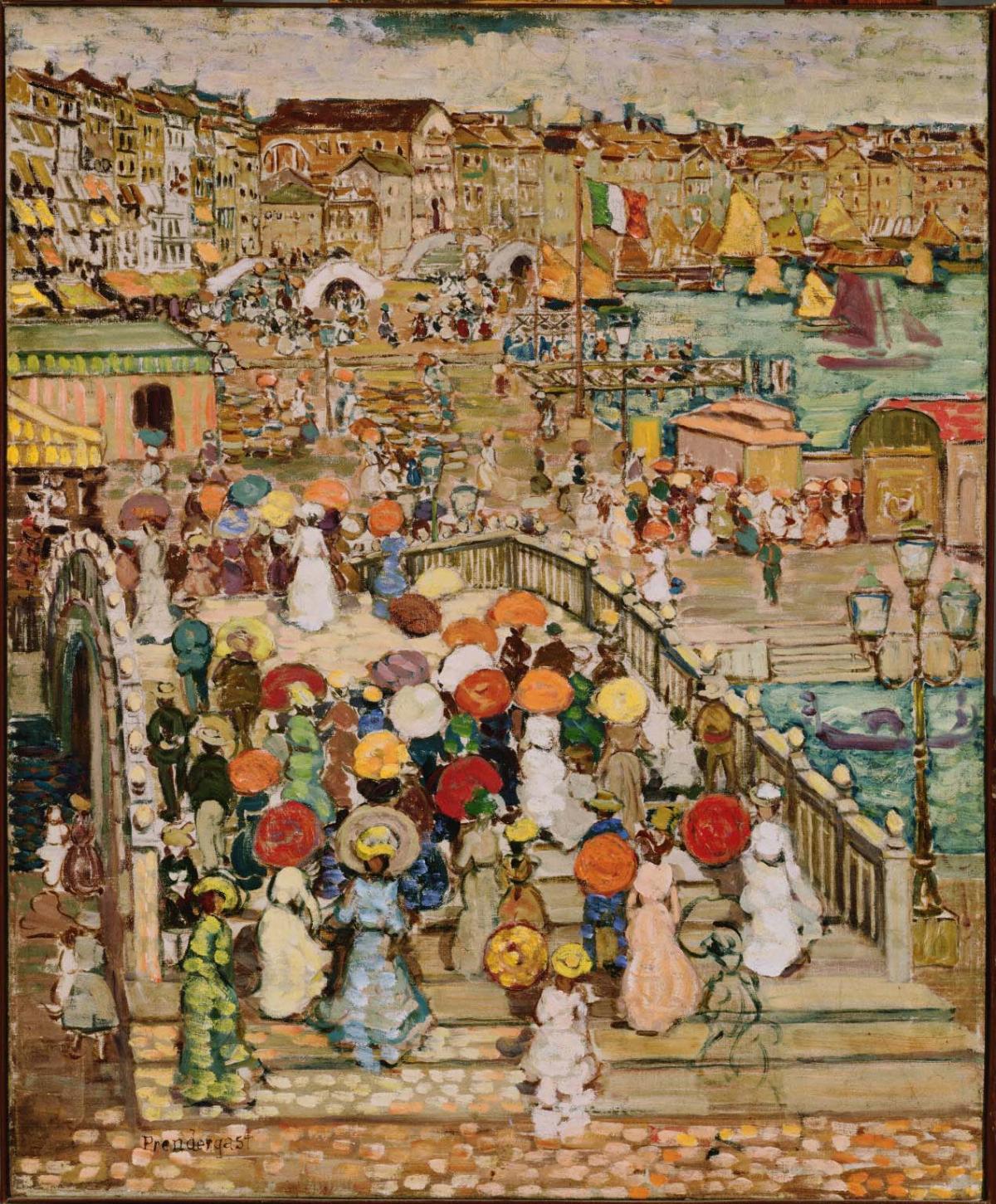Ponte della Paglia
Maurice Prendergast ( c. 1898/reworked 1922 )

Ponte della Paglia, one of Prendergast’s earliest and most delightful large oils, was extensively repainted by the artist many years after its original execution and shows the contrast between his early and late styles. Begun during a visit to Venice in 1898-1899, the painting remained in Prendergast’s possession until 1922. At some point during this period, the tightly painted and detailed figures and surroundings, which are characteristic of the artist’s early style, were overpainted in the foreground and middle distance with colorful, thick, broad brushstrokes and heavy outlines, revealing his freely personal adaptation of the pointillist technique. The later overpainting has unified the work into a rich tapestry of color.
Duncan Phillips’s comments about Prendergast’s European scenes seem particularly apt in looking at this painting. He wrote: “…he laid on round touches of color, one over another, allowing the undercolors to show through. Thus he made his tones flicker and his tapestry not a flat textile, but a world of glowing space….”
The bright, gay crowd scene reveals the artist’s delight with his festive Venetian surroundings. It also suggests the possible influence of Vittore Carpaccio’s Saint Ursula series, 1490-1500, at the Venice Academy, in which there is a mass of figures receding into space over an arched bridge. Not only does the Prendergast have a similar composition, it also uses the warm, glowing tones of Venetian painting. The scene of Ponte della Paglia—a crowd of animated figures with colorful dresses and umbrellas—is typical of Prendergast’s work throughout his career. His preference for festive throngs in parks and on beaches led him to develop great variety in color and composition within limited subject matter.